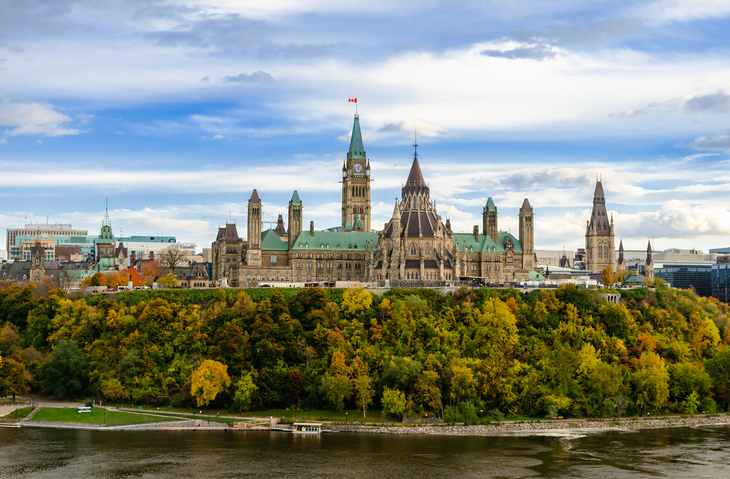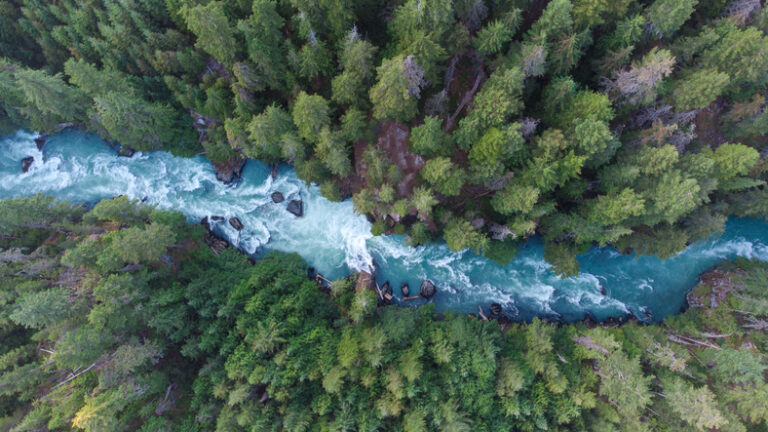India, Germany, Belgium, and the U.S.A. experienced unprecedented rains and catastrophic floods that resulted in loss of life and widespread damage. While floods are common in many parts of the world, climate change and rapid urbanization have exacerbated the problem. Stormwater management is a global challenge.
Low impact development (LID) mimics a site’s natural hydrological cycle to manage runoff close to its source. As land is expensive real estate, designers are turning to the many rooftops, which make up 20-25 per cent of the land area in major North American cities.
There is growing interest in using green roofs, blue roofs, and blue-green roofs to manage stormwater in urban centres such as Toronto and Vancouver.
Traditional green roofs for retention
Green roofs are specialized roofing systems that support vegetation growth on rooftops. They provide a bounty of benefits such as improvements in air quality, biodiversity, urban heat island effect, and roof membrane longevity to name a few. They also deliver stormwater management by retaining rainfall volume in their components. Once these layers become fully saturated, their water storage capacity is reached, and excess rainfall leads to the roof drain as quickly as it falls on the surface of the green roof. Additional stormwater management benefits can be achieved through rooftop detention mechanisms that function independently of green roof saturation levels.
Evolution of rooftop detention systems
There are different types of roof-based detention tools on the market. They all have one characteristic in common—they release water runoff at a reduced rate over a longer period of time to prevent the overloading of stormwater infrastructure. All solutions have their merits, and often a single project may benefit from multiple approaches.
Blue roofs pond water on a roof and slowly release it over time. Runoff is controlled through strategically localized flow restrictors (i.e., orifice restrictor, holes in an elevated drainpipe, or a mechanical valve that opens and closes using smart technology). They are often the most economical rooftop detention tool. The technology was introduced in North America in the 1970’s and while effective, blue roofs have some inherent disadvantages that have prevented them from becoming a popular stormwater water management solution. For instance, blue roofs require zero per cent slope to maximize water storage as even a one to two per cent slope can prevent the surfaces away from the drain from being fully utilized.

However, the National Building Code requires a minimum roof slope of two per cent to promote positive drainage, which greatly reduces a blue roof’s water storage volume. Special attention must be paid to the waterproofing membrane type and installation technique to ensure warranties are valid. Lastly, standing water may pose a risk of disease and safety issues to maintenance personnel.
Blue-green roofs are exactly what their name suggests. They are essentially a traditional green roof with a blue roof basin below. The vegetated portion of the systems serves to filter runoff and provide all the benefits of a traditional green roof while the lower portion offers detention like a blue roof. Unfortunately, due to their similarity with blue roofs, blue-green roofs end up inheriting most of a blue roof’s weaknesses.
A nature-based approach
In nature, rainfall joins the nearest stream after travelling a laborious path crowded with trees, plants, grasses, rocks, and fallen debris. These obstacles create friction which serves to slow down the rate of runoff. Using the principles of biomimicry, a traditional green roof can be re-designed to emulate nature’s friction-detention mechanism.
Friction-detention green roofs delay runoff and reduce peak intensity at the drainage level over the entire roof surface. A friction-detention mat, which is made up of thousands of very fine vertical fibres sandwiched between two geotextiles, creates friction for the runoff. This mat allows small amounts of runoff to flow through unimpeded but slows down large volumes of runoff. As a result, runoff enters the roof drains at a slower rate over a longer time, which prevents overloading the storm sewers.
Friction-detention green roofs support living plants and provide all the benefits of traditional green roofs. Because the detention mechanism does not rely on single flow restrictors, it is a flexible system that is better suited to more applications than blue-green roofs.
Friction-detention green roofs:
- Can manage back-to-back rainfall events and large intense storms regardless of antecedent weather conditions (i.e., even when retentive layers are completely saturated).
- Can be implemented on low-sloped roofs without losing efficiency and sloped roofs effectively.
- Can “recharge” or repeat detention performance within a short time span, usually within 24 hours.
- Are particularly economical on irregular shaped roofs where numerous roofs drains would require flow restrictors.
The research behind vegetated systems with friction-detention technology
Green Roof Diagnostics has conducted thousands of rain tests and research on various blue-green systems.
Water fills and exists differently given a “traditional” system using simple drainage cups to expedite fast drainage, an “enhanced retention” system with a high performing water retention layer, and a “friction-detention” green roof with both retention and friction-detention layers.
Research has also been done to examine the effectiveness of the friction-detention green roof by comparing hydrographs from the same three systems in an actual rain test.
Calculating detention performance
A successful friction-detention green roof design requires collaboration from several disciplines. Civil engineers, architects, mechanical engineers, and landscape architects provide project-specific details (i.e., size, location, design storm, maximum allowable outflow rate, etc.). Using this input data, a proprietary detention modeling program accurately predicts performance and calculates the appropriate green roof profile to meet detention and retention requirements.
Conclusion
A friction detention green roof combines retention and detention in a single system. This increases the stormwater management capacity per unit area of rooftop space and maximizes the ROI. It stores a large amount of rainwater to be evaporated back to the atmosphere and delays runoff reliably during heavy downpour to minimize flood risks. Adding detention to retention on green roofs better manages stormwater and increases resilience in our cities.
This article was written by Sasha Aguilera, the design ambassador at Next Level Stormwater Management, and Dr. Karen Liu, the Green Roof Specialist at Next Level Stormwater Management, for the September/October issue of Water Canada. The header image credit goes to Greg van Riel.









